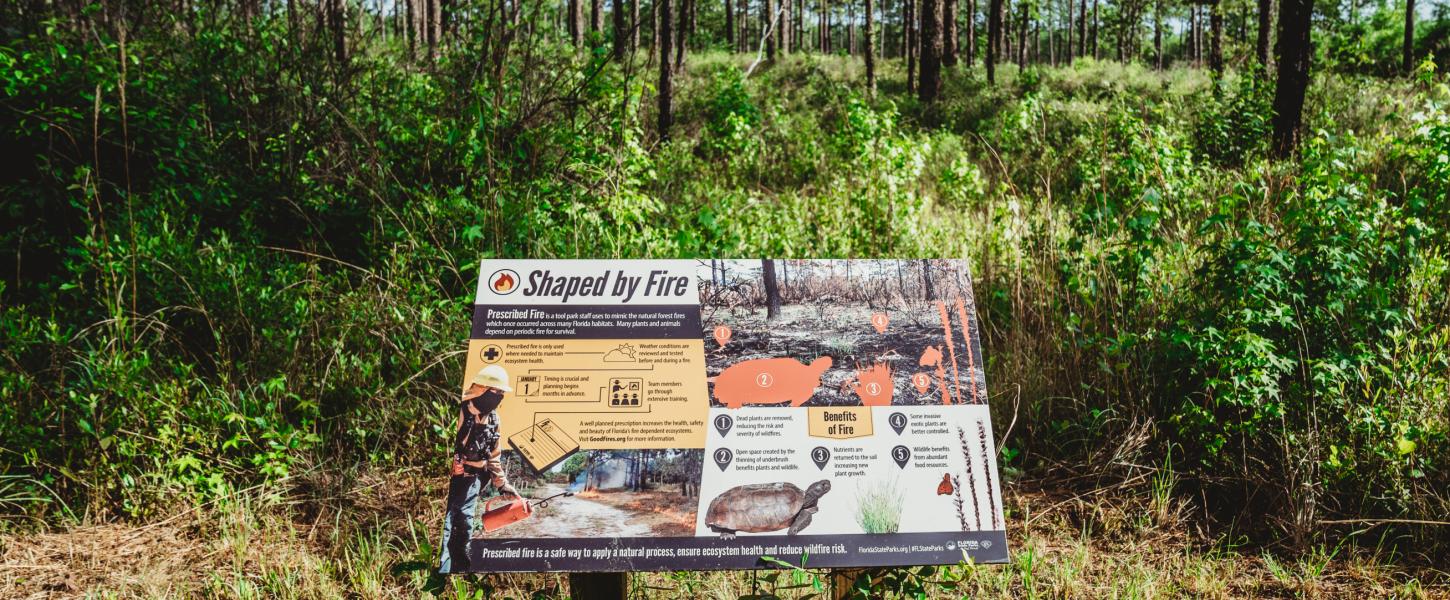Longleaf Pines at Ponce de Leon

Florida State Parks have many resources that we’re proud to share with our visitors, not the least of which are the arboreal features. Ponce de Leon Springs State Park is home to the longleaf pine, which has played an important role in the natural and cultural history of this area.
These stately trees can reach heights of 115 feet and can live up to 500 years. This means there could be longleaf pines today that were seedlings when our park’s namesake, Juan Ponce de Leon, was still alive.
Longleaf pine trees are not only resistant to the natural cycles of fire that occur here in Florida but are dependent on it, as their seeds need to be in contact with bare soil to germinate. This means that these trees are able to thrive where fire has excluded other trees that would normally compete for the same habitats.
Longleaf forests are a biodiverse habitat filled with a wide range of plants including wiregrass, wild orchids and carnivorous plants. These woodlands are also home to animals such as deer, woodpeckers, owls and the endangered gopher tortoise.
The longleaf pine forest in Ponce de Leon Springs State Park also acts as historian. The cultural influences of the 19th and early 20th century are exhibited through a raised mound path that cuts through a section of the woods terminating over 10 feet above Sandy Creek. This evidence tells the tale of an old railroad bed that was constructed through the area as a means for transporting pine tar to be processed into turpentine and to supply timber for the lumber industry. Scars called “cat faces” on the pines along with metal artifacts also bear witness to the collection of pine resin for turpentining.
Come visit us at Ponce de Leon Springs State Park. See our forest, and our trees, and we encourage you to listen to them as well. They might just have a story to tell.